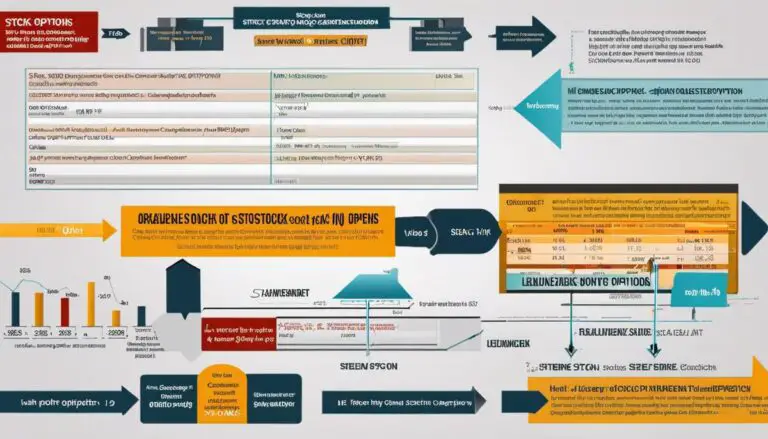Embarking on a journey to understand the inner workings of investment success requires a navigation through the minds of the maestros of the markets—those financiers who have turned methodical approaches into substantial wealth. Whether it’s Warren Buffett’s emphatic focus on intrinsic value or Peter Lynch’s relatable strategy of investing in what you’re familiar with, there’s an undeniable wealth of wisdom to be found in their decades-spanning careers. From unwrapping the intricacies of their investment philosophies to decoding their proven risk management frameworks, our exploration will also lead us through the analytical landscapes of market analysis, the foresight of an entrepreneurial mindset, and the invaluable art of networking and information gathering. With astute observation and keen insight, any investor can transform these guiding principles into a robust blueprint for financial success.
Decoding Investment Philosophies
Unlocking the Secrets of Top Investors: Principles for Unparalleled Success
In the world of investing, success is not accidental. It’s the byproduct of a steadfast adherence to certain timeless principles that have proven their worth across industry fluctuations and economic cycles. Top investors, distinguished by their uncanny ability to maximize ROI, consistently follow a well-defined set of strategies to keep their portfolio growing and to navigate the ever-shifting market tides.
Principle 1: Ongoing Education
The business landscape is ever-evolving. Industries adapt, technologies advance, and consumer behaviors shift. Investors without a passion for continuous learning quickly find their strategies obsolete. Embracing ongoing education is critical. It includes expanding one’s financial literacy, understanding market trends, and scrutinizing emerging industries.
Principle 2: Diversification
Diversification is more than a buzzword; it’s the investor’s suit of armor. By spreading assets across various sectors and investment types, they mitigate risk and harness the potential of different growth patterns. It’s not about having all the eggs in multiple baskets—it’s about choosing the right baskets that align with calculated risk tolerance and investment goals.
Principle 3: Risk Management
Top investors never shy away from risks—they master them. They know their risk threshold and balance high-risk opportunities with safe bets. Moreover, risk management extends into due diligence: thoroughly vetting potential investments and understanding the intricacies of each deal before diving in.
Principle 4: Long-Term Vision
Short-term gains can be enticing, but the leading investors play the long game. They focus on wealth accumulation over years or even decades. This perspective allows them to ride out volatility, benefit from the compounding effect of returns, and make strategic decisions that favor sustained growth over temporary successes.
Principle 5: Emotional Discipline
Markets can be as temperamental as weather, swinging from euphoria to despair. But while the market has moods, top investors do not. Emotional discipline is paramount. They possess the composure to stay the course during downturns and the restraint to avoid irrational exuberance when the market peaks. This stoicism maximizes their decision-making effectiveness.
Principle 6: Networking
Top-tier investors know that wealth isn’t created in a vacuum. They cultivate an extensive network that provides them with valuable insights, opportunities to co-invest, and the chance to learn from others’ successes and failures. Networking ensures that they always have a finger on the pulse of innovation and market sentiment.
Principle 7: Adaptability
The best-laid plans may falter in the face of market realities. Top investors embrace adaptability, constantly reassessing and re-aligning strategies with current market conditions. They proactively pivot when necessary, and they aren’t afraid to cut their losses and reformulate their approach when the situation demands it.
Closing Thoughts
Investing isn’t just about capital—it’s about principles that govern its deployment. Each of the above principles functions as a crucial gear in the wealth creation machine. Whether one is assessing the next unicorn start-up or eyeing the stability of blue-chip stocks, the game is won by those who understand and follow these unwavering investment doctrines.
In the ultimate analysis, mastering these principles isn’t just about wealth—it’s about securing a position in the vanguard of financial acumen, where every decision is both data-driven and instinct-honed. It is here that the top investors thrive, setting the pace and defining the essence of investment excellence.

Risk Management Strategies
The Artful Tactics of Risk Mitigation in High-Stakes Investing
In the elite spheres of high-stakes investing, successful investors leverage precise, pivotal tactics to curtail risk without stifling the potential for prodigious returns. Mastery of risk mitigation is not merely a by-product of the strategies widely propagated; instead, it’s the application of nuanced maneuvers that truly distinguishes the seasoned investor.
One cardinal rule that guides risk-smart investors is the principle of due diligence. Comprehensive, incisive research forms the bedrock of any investment decision. The savvy investor delves into the granular details of every potential asset, from market trends and financial statements to leadership evaluation and competitive positioning. This meticulous analysis ensures that choices are data-driven and girded by a thorough understanding of the investment landscape.
Hedge tactics are another instrument in the savvy investor’s repertoire. By using financial derivatives such as options and futures, investors can buffer their portfolios against downturns. Such instruments allow the hedging of positions, providing insurance against adverse price movements and aligning with the investor’s market expectations — a sophisticated way to play both offense and defense in the investment game.
A keen insight into market timing also plays a quintessential role. Astute investors recognize that timing is not about predicting peaks and troughs but about striking the balance between opportunity and caution. They harness the power of ‘contrarian investing,’ a strategy that involves going against prevailing market sentiments, thereby capitalizing on overlooked value or selling overhyped securities.
Further, capital allocation acumen remains crucial. Successful investors do not allocate capital uniformly; they modulate investment size based on conviction levels, potential return, and risk profile. They know when to double down on winning positions and when to cut losses, ensuring the longevity and health of their investment portfolio.
Lastly, elite investors embrace technological innovation to stay ahead. Implementing cutting-edge tools and algorithms allows for the meticulous assessment of risks and optimized portfolio management. As technology evolves, so do the methodologies to predict market behaviors, analyze vast sets of data, and execute trades with precision, providing an edge over less tech-savvy competitors.
Conclusively, the harmonization of these advanced risk mitigation tactics constructs a bulwark against the tempests of volatile markets. The successful investor, therefore, does not merely navigate the currents of risk but harnesses them, transforming potential threats into the very catalysts for outstanding investment triumphs.

Market Analysis Techniques
***
Mastering the Market: The Analytical Techniques of the Successful
Venturing into the world of market analysis commands a blend of skill, intuition, and, most crucially, an arsenal of versatile techniques. Those thriving in today’s vibrant economic landscape do so through a meticulous combination of forecasting methods and by perceiving signals others may overlook. Let’s explore the refined market analysis techniques that set apart the formidable from the fledgling.
Quantitative Analysis: Numbers Speak VolumesTop-performing investors harness the power of quantitative analysis. This technique involves crunching numerical data through complex algorithms and statistical models to predict market trends. By interpreting quantitative signals—from historical data to price patterns—the astute investor gains a more structured understanding of potential market movements.
Behavioral Economics: Deciphering Human ActionAnother standout strategy is leveraging behavioral economics to comprehend market dynamics. This field studies the effects of psychological, cognitive, emotional, cultural, and social factors on the economic decisions of individuals and institutions. By coupling this with traditional financial analysis, savvy individuals can anticipate irrational market behavior before it transpires, turning anomalies into opportunities.
Competitive Analysis: Your Rivals’ RoadmapNothing spells intelligence like knowing the competition. It’s critical to perform an exhaustive competitive analysis—evaluating competitors’ strengths, weaknesses, market shares, and strategies. This provides insights into market saturation, potential opportunities, and threats looming on the horizon, empowering decision-makers to craft well-positioned moves in the marketplace.
SWOT Analysis: The Strategic Square-OffThe time-tested SWOT analysis, dissecting strengths, weaknesses, opportunities, and threats, remains a favored weapon in the analytical armory. This straightforward yet profound approach assists in mapping out strategic positions and identifying key factors that may influence future operations and investments.
Scenario Planning: Preparing Multiple FuturesNobody predicts the future with absolute certainty. Thus, the forward-thinking strategist employs scenario planning, constructing detailed ‘what if’ scenarios to prepare for various conceivable futures. By imagining both optimistic and pessimistic outcomes of market conditions, investors can develop contingency plans, staying several steps ahead of the curve.
Sentiment Analysis: The Mood of the MarketHarnessing the power of sentiment analysis, where investor sentiment and buzz are monitored, offers invaluable insights. This emerging field, amplified by big data and artificial intelligence, scans news articles, social media, and other textual sources to gauge public mood and forecast market directions based on prevailing sentiments.
Each of these techniques, when wielded with precision and combined with a well-rounded understanding of market fundamentals, equips the judicious investor with an almost clairvoyant grasp of the financial terrain. The interplay of analytical prowess and strategic insight is what crafts the path to market leadership. Therefore, it’s not just about outsmarting the competition—it’s about reshaping the battlefront with actionable intelligence.
In the arsenal of the successful, these are but a few tools. True market mastery lies in a continuous quest for knowledge, an unyielding commitment to innovation, and a robust adaptability to ever-evolving conditions. As markets ebb and flow, the prepared and the perceptive shall not only survive but thrive.

Adopting an Entrepreneurial Mindset
Entrepreneurial thinking stands at the confluence of innovation and pragmatism, essential for navigating the unpredictable tides of investment. To stay afloat and ultimately sail towards significant gains, it is essential to engage with a mindset that is not just entrepreneurial, but investment-centric.
Tapping into Global Markets: A Global Perspectivex
In the current economic climate, opportunities are not limited by geographic boundaries. Ventures that understand and leverage the potential of emerging markets equip themselves with the fortitude to overcome domestic uncertainties. The savviest investors analyze political stability, growth trajectories, and consumer behavior across borders to identify untapped potential.
Strategic Partnerships: Catalyzing Mutual Success
Collaboration is a cornerstone of entrepreneurial success. In the investment world, strategic partnerships can open the door to new insights, provide access to additional resources, and create synergies that enhance overall returns. By aligning with the right partners, one can amplify market reach and consolidate expertise, all while sharing the risks and rewards.
Leverage Data Analytics: Mining for Gold in the Data Deluge
In the age of big data, investors who utilize analytics to interpret complex datasets can spot trends, predict market movements, and make informed decisions swiftly. Advanced algorithms and machine learning tools help distill vast amounts of information into workable insights, demonstrating that those who invest in knowledge gain the greatest dividends.
Nurturing Innovation: Seeding Future Growth
Staying content with the status quo is a sure path to stagnation. Investors with an eye for innovation not only contribute to but also capitalize on the next wave of market-leading products and services. Whether it’s cutting-edge biotechnology, transformative renewable energy, or a groundbreaking software platform, investing in the novel can yield results that are as spectacular as the ideas themselves.
Sustainability and Ethics: The New Investment Imperatives
The modern investor must also align with sustainability and ethical considerations. As consumers and regulatory bodies increasingly favor responsible business practices, investments that disregard these factors face amplified risks. A business focus on sustainability can open new markets, improve efficiencies, and establish a brand’s reputation as an industry leader.
Exit Strategies: Planning the Full Investment Lifecycle
An entrepreneurial approach to investing entails a clear-eyed understanding of when to enter—and importantly, when to exit—investment positions. Knowing the optimal moment to divest an asset, whether to realize gains or curtail losses, is derived from a nuanced understanding of market cycles, valuation peaks, and exit channels.
Reinvesting Profits: The Engine of Compound Growth
The lifeblood of entrepreneurial investment success lies in the reinvestment of profits. It’s not enough to simply accumulate gains. The judicious plow-back of earned wealth into new, potentially profitable ventures ignites the power of compounding, exponentially growing an investment portfolio over time.
In conclusion, intertwining entrepreneurship within the investment process is more than applying a set of practices; it is a philosophy. It combines a vision for innovation with rigorous analytical prowess and a willingness to embrace change, leading the shrewd investor to the pinnacles of investment success.

Networking and Information Gathering
How Prominent Investors Leverage Their Networks for Insider Insights
In the ever-evolving world of investment, savvy players recognize that a deep, dynamic network is not just a social advantage but a strategic asset. Influential investors, with their fingers on the pulse of multiple industries, deploy their networks for critical insights that can make or break investment decisions. Let’s dissect the methodologies adopted by these investment gurus that distinguish their approach and equip them with the prescience to navigate and capitalize on market dynamics ahead of the curve.
Mastering Information Asymmetry
The landscape of investment is a battleground of information asymmetry – the more you know that others don’t, the higher your competitive edge. Prominent investors engage actively with their extensive networks that span industry experts, corporate insiders, and influential policy-makers to gain early access to information. These can translate into actionable intelligence on corporate health, industry trends, regulatory changes, and even geopolitical shifts before they hit the mainstream news-cycle.
Peer Group Analysis
Seasoned investors align with peer groups often comprised of top-tier financiers, entrepreneurs, and executives. The collaborative discourse within such circles provides an amalgamation of diverse perspectives. These nuanced viewpoints challenge conventional wisdom and provide a more compelling, holistic understanding of investment opportunities and potential headwinds.
The Power of Mentorship
The adage “you’re only as good as the company you keep” rings particularly true in the world of investing. High-profile investors often assume mentorship roles which reciprocally allow them to tap into fresh perspectives and innovative ideas. Mentor-mentee relationships serve as crucibles for refining strategies, where emerging trends are dissected and investment theses are stress-tested.
Exclusive Investment Clubs
The one-percenters often belong to exclusive investment clubs and high-stakes Mastermind groups. These are not your average networking events, but high-caliber think tanks where deep, off-the-record conversations take place, giving members a vantage point inaccessible to the lay investor.
Leveraging Advisory Roles
Astute investors don’t just depend on surface-level networking. They embed themselves in companies as advisors or board members. This proximal positioning provides insight into the minutiae of business operations and future planning; a granularity of knowledge rarely available through other means.
Harnessing the Convergent Power of Tech and Finance Networks
Tech has indisputably permeated all industry sectors. Leading investors actively create and foster symbiotic relationships within the tech community, understanding that the next disruptive innovation in fintech, prop-tech, or health-tech, for example, could redefine market paradigms. By bridging their finance acumen with the burgeoning tech scene, they sit at the nexus of potential investment windfalls.
Global Economic Summits and High-Profile Retreats
Where better to glean investment insights than at global economic summits and retreats where thought leaders, policymakers, and top investors congregate. Here, in settings designed to foster open exchange and networking, the who’s who of the investment world share predictions, insights, and strategies that shape investment approaches moving forward.
In closing, the tapestry of strategies showcased here underscores a fundamental truth—the contemporary investor’s arsenal extends far beyond financial acumen into the realms of relationship-building and information synthesis. It is through the keen orchestration of these networks that elite investors remain ahead, using insider insights not as a mere bonus but as the cornerstones of their investment philosophy.

The art of investing stretches far beyond mere numbers on a screen or pages of financial reports; it is a dance of discipline, foresight, and relentless learning. The ability to distill the essence of numerous sophisticated strategies into actionable insights is what delineates the novices from the veterans in the field of investment. With each investment philosophy absorbed, risk mitigated, market trend analyzed, entrepreneurial opportunity seized, and professional relationship cultivated, an investor carves a deeper niche in the landscape of financial mastery. The journey is perpetual, as markets evolve and opportunities unfold, but armed with the wisdom of those who have tread the path successfully, the prospect of carving out one’s own investment success story becomes not just a possibility, but a palpable reality.



